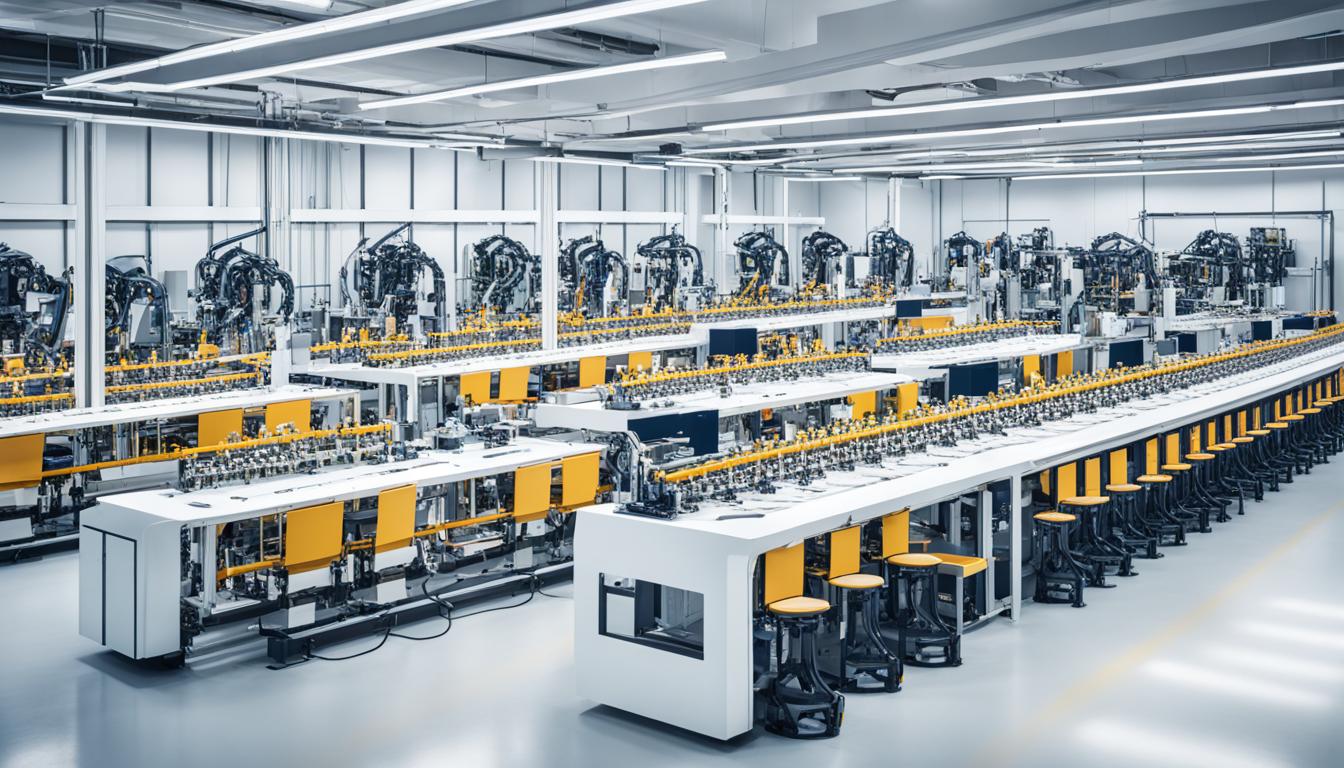Technology & Financial
The Tapestry of Technological Elegance: Weaving Robotics into Luxury Fabrics
Gone are the days when fashion was solely the realm of human craftsmanship. Today, the luxury fabric industry is undergoing a remarkable transformation, thanks to the integration of robotics and automation technology. This seamless fusion of technology and artistry has given rise to a new era of luxury fabrics, where precision, efficiency, and innovation are paramount.
In this article, we embark on a journey through the intricate world of robotics and luxury fashion. From the runways of Paris Fashion Week to iconic brands pushing the boundaries of design, we explore the ways in which robotics and automation have revolutionized the creation, design, and manufacturing of luxury fabrics.
Key Takeaways:
- The integration of robotics and automation technology is transforming the luxury fabric industry, enhancing precision and efficiency.
- Paris Fashion Week showcases futuristic fashion incorporating robotics and automation.
- Iconic brands embrace the robotic revolution, pushing the boundaries of fashion innovation.
- Robotics and automation play a vital role in fabric creation, revolutionizing the textile industry.
- The collaboration between robotics engineering and traditional craftsmanship creates unique and boundary-pushing designs.
The Intersection of Haute Couture and High Tech
In the fascinating realm of luxury fashion, the worlds of haute couture and high tech collide, giving birth to a new era of sartorial innovation. As designers seek to push the boundaries of creativity and craftsmanship, they are turning to robotics and automation as powerful tools in their artistic arsenal.
Fashion Forays into Futurism: Paris Fashion Week Highlights
At Paris Fashion Week, where the industry’s most visionary designers converge, the runways have been transformed into showcases of future-inspired fashion. Haute couture garments, once solely within the realm of manual craftsmanship, are now infused with high-tech wizardry, blurring the lines between fashion and science fiction.
Designers such as Iris van Herpen and Alexander McQueen have embraced the robotic revolution, incorporating cutting-edge technologies into their collections. These fashion pioneers have taken risks, defying convention and captivating audiences with their avant-garde creations.
From 3D-printed garments that merge architectural precision with exquisite drapery to interactive outfits adorned with light displays and sensors, the marriage of haute couture and high tech at Paris Fashion Week showcases the limitless possibilities that arise when innovation and creativity collide.
Iconic Brands Embracing the Robotic Revolution
Not only emerging designers but also iconic brands have embarked on a transformative journey, embracing the disruptive force of robotics in the world of fashion. These industry powerhouses recognize that technology can enhance their heritage and craftsmanship, enabling them to create groundbreaking designs that perfectly blend tradition and innovation.
Luxury fashion houses such as Gucci and Louis Vuitton are harnessing the power of robotics to create intricate embroidery, precision pattern cutting, and flawlessly constructed garments. By leveraging robotic automation, these iconic brands are able to achieve unparalleled levels of detail and accuracy, revolutionizing the way fashion is crafted and experienced by discerning clientele.
Balenciaga’s Boundary-Pushing Inflation Innovation
One brand in particular, Balenciaga, has been at the forefront of pushing the boundaries of high fashion and high tech. Known for its bold and experimental approach, Balenciaga unveiled its groundbreaking inflation innovation at Paris Fashion Week.
Balenciaga’s visionary designers have combined robotics with traditional fashion techniques to create garments that defy expectations. Through the use of robotic air chambers placed strategically within the fabric, the garments self-inflate, altering their shape and silhouette, captivating audiences and challenging conventional notions of what clothing can be.
This inflation innovation from Balenciaga serves as a testament to the immense creative possibilities that arise when haute couture and high tech collide, paving the way for a new era of experimental fashion.
Highlights of Haute Couture and High Tech in Fashion
| Designers | Technologies | Highlights |
|---|---|---|
| Iris van Herpen | 3D Printing | Architectural precision meets drapery in couture creations. |
| Alexander McQueen | Interactive Garments | Light displays and sensors transform fashion into an interactive experience. |
| Gucci | Robotic Embroidery | Precision embroidery takes craftsmanship to new heights. |
| Louis Vuitton | Robotic Pattern Cutting | Flawless precision in pattern cutting elevates luxury fashion. |
| Balenciaga | Inflation Innovation | Robotic air chambers create self-inflating garments for avant-garde fashion. |
Table: Highlights of Haute Couture and High Tech in Fashion
Spotlight on Robotics and Automation in Fabric Creation
In the world of luxury fashion, the creation of exquisite fabrics is an art form that requires precision, creativity, and efficiency. With advancements in robotics and automation technology, the textile industry has undergone a remarkable transformation. Robotics and automation have revolutionized the fabric creation process, enhancing efficiency and bringing new possibilities to the world of fashion.
One of the key advancements in fabric creation is the utilization of automated looms. These sophisticated machines are capable of weaving intricate patterns with unparalleled precision. By harnessing the power of robotics, designers and manufacturers are able to create fabrics that were once considered impossible to produce by hand.
Furthermore, cutting-edge robotic systems have been developed to streamline the fabric manufacturing process. These systems can perform tasks such as cutting, stitching, and embroidering, with incredible speed and accuracy. By automating these repetitive tasks, designers and manufacturers can focus more on the creative aspects of fabric design, resulting in unique and innovative creations.
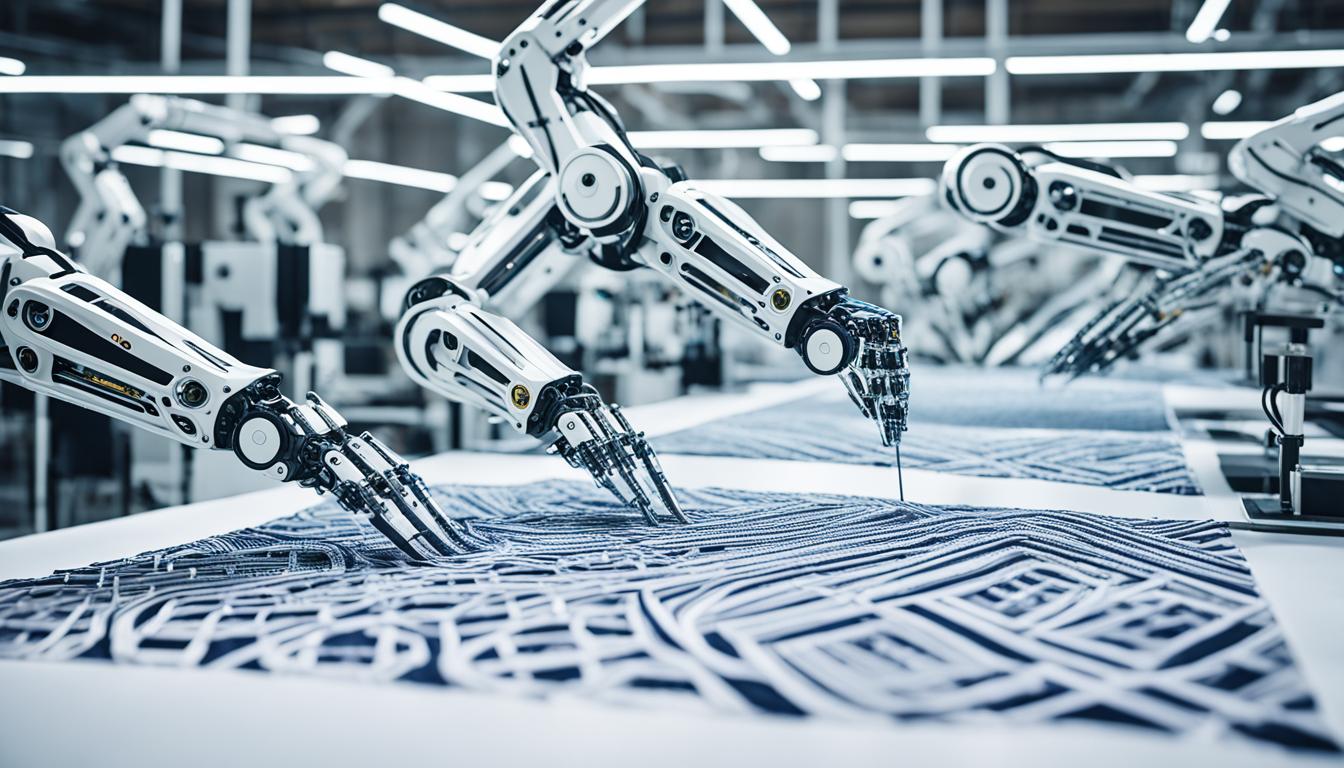
The integration of robotics and automation technology into fabric creation has not only enhanced efficiency but also opened up new avenues for experimentation and creativity. By combining traditional craftsmanship with cutting-edge technology, designers can push the boundaries of fabric design and create garments that truly stand out in the fashion industry.
In addition to enhancing efficiency and creativity, robotics and automation have also played a significant role in improving the sustainability of the textile industry. With automated processes, fabric manufacturing can be optimized to minimize waste and reduce the environmental impact. By using precise measurements and calculations, materials can be utilized more efficiently, resulting in less material waste and lower carbon emissions.
As the textile industry continues to evolve, the integration of robotics and automation technology will undoubtedly play a vital role in shaping the future of fabric creation. From automated looms to cutting-edge robotic systems, the possibilities for innovation and creativity are limitless. The fusion of craftsmanship and technology in fabric creation paves the way for new and exciting possibilities in luxury fashion.
The Fine Weave of Robotics Engineering and Traditional Craftsmanship
This section explores the fascinating intersection of robotics engineering and traditional craftsmanship that has reshaped the landscape of the luxury fabric industry. The combination of cutting-edge technology and centuries-old techniques has resulted in remarkable innovations and intricate designs.
Shanel Wu: A Tapestry of Craft and Technology
One inspiring figure in this realm is Shanel Wu, a talented Taiwanese-American maker who seamlessly blends fiber skills, weaving expertise, and computational craft to create a mesmerizing tapestry of craft and technology. Wu’s work exemplifies how robotics engineering and traditional craftsmanship can coexist harmoniously, pushing the boundaries of creativity and design.
Through her intricate woven pieces, Wu showcases the potential of incorporating robotics and automation into the art of fabric creation. She masterfully combines digital technologies with traditional weaving techniques, resulting in unique and captivating textile artworks.
Wu’s approach highlights the harmonious marriage of tradition and innovation, demonstrating that the integration of robotics engineering into traditional craftsmanship can be both aesthetically captivating and conceptually thought-provoking. By embracing the capabilities of robotic systems and leveraging her deep understanding of traditional craft, she redefines the boundaries of what is possible in the luxury fabric industry.
The Vogue of Vest Sensors: Unveiling Smart Textiles
An exciting development in the realm of robotics engineering and luxury fabrics is the emergence of smart textiles. These innovative materials combine advanced sensor technology with traditional fabric construction, blurring the lines between fashion and functionality. As these smart textiles infiltrate the fashion industry, they offer fascinating possibilities for customization, adaptability, and enhanced wearer experiences.
“Smart textiles represent a fusion of engineering and design, where technological advancements enhance the fabric’s ability to adapt, sense, and respond to the wearer’s needs.”
Vest sensors, for instance, represent a vogue innovation in the realm of smart textiles. These garments incorporate sensors that can measure vital signs, detect movement, and provide valuable insights into the wearer’s well-being. By seamlessly integrating these advanced technologies into fabrics, fashion designers can create garments that prioritize both style and functionality.
The unveiling of smart textiles opens up new possibilities for robotics engineering within the luxury fabric industry. From self-adjusting garments to biometric tracking, the integration of automation and robotics technology enhances the overall fabric creation process and enriches the fashion experience for consumers.
| Traditional Craftsmanship | Robotics Engineering |
|---|---|
| Deep-rooted heritage and centuries-old techniques | Advanced robotics systems and automation technology |
| Handcrafted attention to detail | Precision and efficiency in fabric production |
| Unique craftsmanship and artistic expression | Innovative designs and limitless possibilities |
| Authenticity and human touch | Seamless integration of technology and creativity |
Artistic Alchemy: Merging Automation Solutions with Aesthetic Vision
In the luxury fabric industry, the convergence of automation solutions and aesthetic vision results in a harmonious blend known as artistic alchemy. This fusion of technology and creativity pushes the boundaries of textile artistry, ushering in a new era of innovation and sustainability.
Chloé’s Legacy of Sustainable Luxury Reinvented
Chloé, a renowned luxury fashion brand, exemplifies the integration of automation solutions and sustainable luxury. With a rich legacy rooted in craftsmanship and elegance, Chloé has reinvented its production processes by embracing robotics and automation. This commitment to sustainability not only ensures ethical practices but also promotes greater efficiency and precision in fabric creation.
To celebrate Chloé’s sustainable luxury journey, the brand has collaborated with tech-inspired materials to create contemporary collections that captivate both fashion enthusiasts and environmental advocates. By incorporating automation solutions into their design and manufacturing processes, Chloé continues to lead the way in a more sustainable and tech-driven future.
Revolutionizing Textile Artistry through Tech-Inspired Materials
The use of tech-inspired materials is revolutionizing textile artistry and challenging traditional design boundaries. By infusing fabrics with innovative technologies and materials such as conductive fibers, smart textiles, and biodegradable fabrics, designers can create fascinating textures, patterns, and functionalities.
At the intersection of art and technology, textile artists are exploring new frontiers of expression. These visionary creators experiment with automation solutions, incorporating them seamlessly into their artistic process, to produce pieces that blend artistry, functionality, and sustainability.
Through the incorporation of automation and tech-inspired materials, fashion designers can push the limits of their creativity, providing consumers with unique and eco-friendly garments that reflect their individuality and values. The integration of automation solutions into textile artistry not only enhances the speed and precision of the creation process but also opens up a world of possibilities for exquisite and sustainable designs.
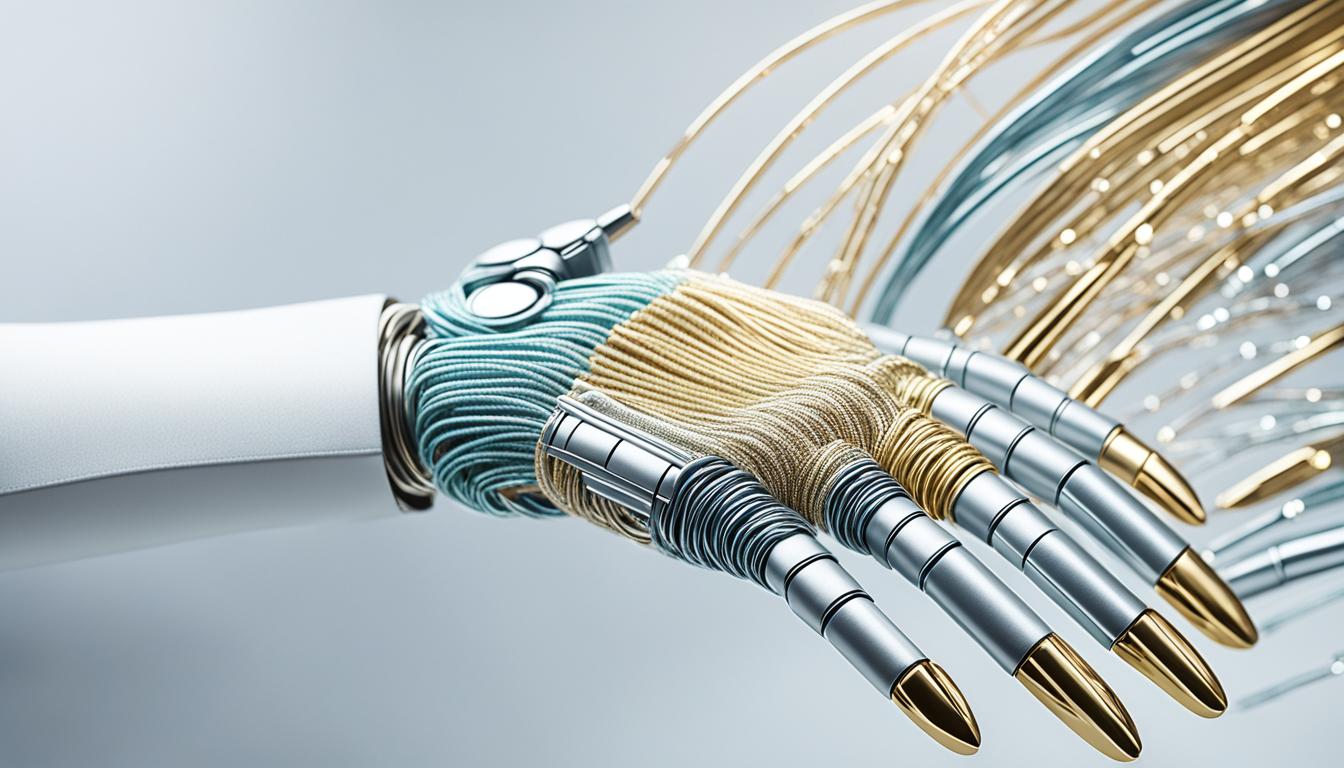
| Automation Solutions | Benefits |
|---|---|
| Automated fabric cutting | Increased accuracy and efficiency in fabric production |
| Robotic weaving | Consistent and precise fabric construction |
| Smart textiles | Integration of functionality and interactivity into garments |
| Biodegradable fabrics | Reduced environmental impact and sustainability |
The table above showcases some of the automation solutions and their associated benefits in the context of textile artistry. These solutions enhance the creative process while contributing to efficiency, precision, and sustainability in luxury fabric production.
Innovation in Textiles: The Role of Automation Software
The luxury textile industry is experiencing a wave of innovation, thanks to the integration of automation software. This technological advancement plays a crucial role in driving efficiency, accuracy, and creativity in the design and production of textiles. From CAD software to virtual prototyping tools, automation solutions are transforming the textile industry.
Automation software simplifies and streamlines various processes in textile design and production. It allows designers to create intricate patterns and designs with precision and speed. With automation, repetitive tasks can be automated, freeing up valuable time for designers to focus on unleashing their creative potential.
CAD (Computer-Aided Design) software is one of the key tools in automation that revolutionizes textile design. It enables designers to create digital patterns and simulations, eliminating the need for manual drafting. CAD software provides a platform for experimenting with different colors, textures, and patterns, empowering designers to bring their visions to life.
Virtual prototyping tools are another critical component of automation software in the textile industry. These tools allow designers to create virtual samples, eliminating the need for physical prototypes. With virtual prototyping, designers can make real-time modifications, test different fabric combinations, and visualize the final product before it goes into production. This not only saves time and resources but also enables designers to make informed decisions and create products that meet the highest standards of quality and aesthetics.
Automation software also plays a significant role in optimizing the production processes of textiles. It enables manufacturers to automate cutting, stitching, and other repetitive tasks, leading to increased efficiency and reduced production time. By minimizing manual errors and ensuring consistency, automation software enhances the overall product quality and reduces waste.
Furthermore, automation software improves collaboration and communication among various stakeholders in the textile industry. Designers, manufacturers, and suppliers can easily share and review digital files, ensuring seamless coordination and faster decision-making. This facilitates a more agile and responsive production process, allowing for faster time to market and better customer satisfaction.
“Automation software simplifies and streamlines various processes in textile design and production.”
– Industry Expert
The integration of automation software into the luxury textile industry is an exciting development that opens up new possibilities for innovation, creativity, and efficiency. As technology continues to advance, automation solutions will continue to shape the future of textiles, revolutionizing the way fabrics are designed and produced.
The Fabrication of the Future: Robotics Companies Shaping Fashion
In this section, we dive into the transformative role of robotics companies in shaping the future of fashion fabrication. From cutting-edge innovations to groundbreaking collaborations, these companies are revolutionizing the way we create and design garments. Let’s explore two fascinating examples that highlight the extraordinary intersection of robotics and fashion.
Boston Dynamics’ Canine Robots Strut the Runway
One of the most remarkable intersections between robotics and fashion comes from none other than Boston Dynamics. Known for their state-of-the-art robotic creations, Boston Dynamics has brought their advanced technology to the runway. Their canine robots, with their stunning agility and lifelike movements, have made a remarkable debut in the world of fashion. Walking alongside models, these robotic companions have captivated audiences and showcased the potential for robotics in fashion shows. With their fluid movements and precision, Boston Dynamics’ canine robots demonstrate the fusion of technology and creativity in fashion fabrication.
Cutting-Edge Collaborations: Tech Meets Textile Designers
The collaboration between tech companies and textile designers has resulted in cutting-edge creations, pushing the boundaries of fashion fabrication. By combining technological expertise with the artistic vision of textile designers, these collaborations have given rise to truly innovative garments. From integrating wearable technology into fabric designs to leveraging robotics for advanced patterning and embroidery, these collaborations have opened up new possibilities in both aesthetics and functionality. By embracing these cutting-edge collaborations, fashion designers are shaping a future where technology and textiles converge to create stunning and groundbreaking fashion experiences.
To further visualize the impact of robotics companies in fashion fabrication, take a look at the image below:
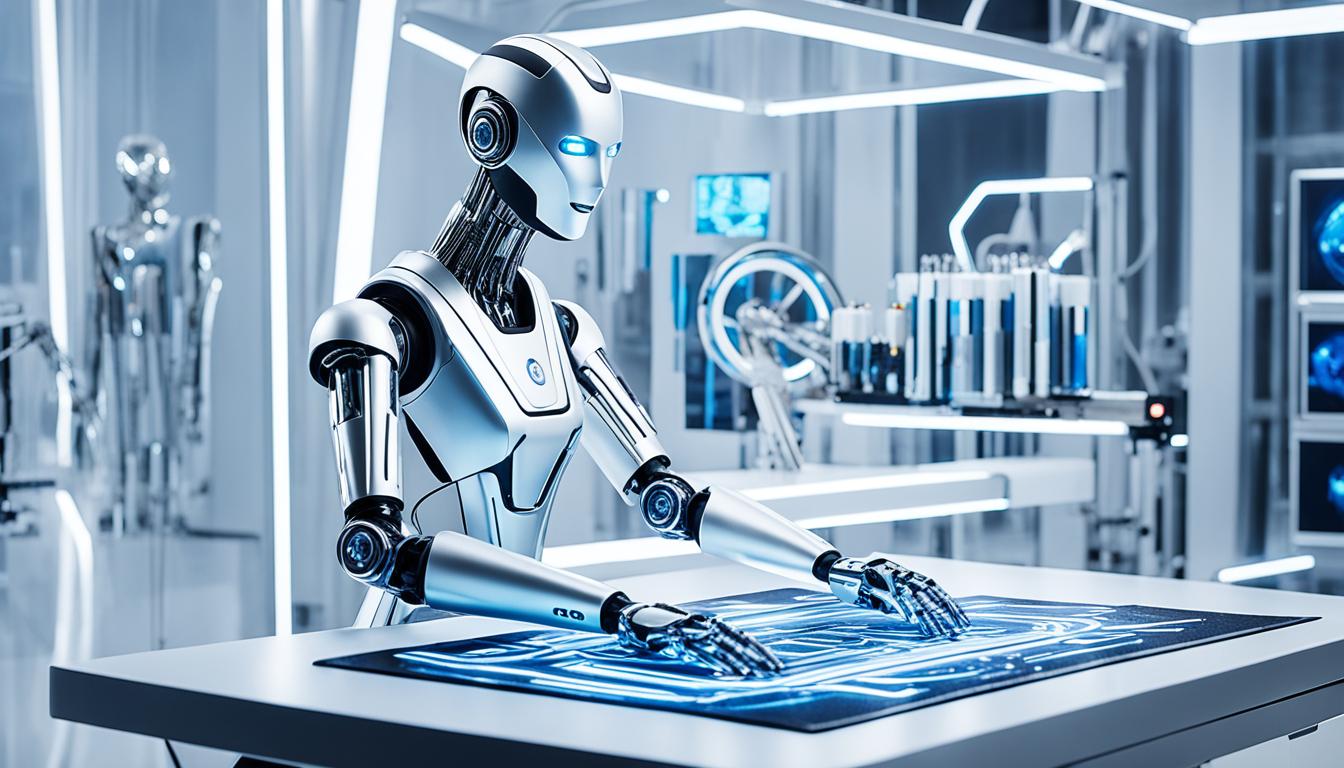
Through the seamless integration of robotics and fashion, these companies are reimagining what is possible in the realm of fabric creation. The combination of technological innovation and artistic expression is giving rise to a new era of fashion that is both visionary and exciting. As we continue to witness the collaboration between robotics companies and fashion designers, the future of fashion fabrication is becoming increasingly interwoven with cutting-edge technology.
Observing Robotics Industry Trends Through the Lens of Luxury
This section explores the latest trends in the robotics industry and their intersection with the luxury fashion market. As robotics technology continues to evolve, it is influencing various sectors, including the production of luxury fabrics. By examining these industry trends, we can gain valuable insights into the potential impact on luxury fashion and the opportunities they present for innovation and growth.
The robotics industry is experiencing rapid advancements in technology, driving innovation and transforming traditional manufacturing processes. Automation systems are becoming increasingly sophisticated, enabling precision and efficiency in fabric production. Industrial automation solutions are revolutionizing the luxury fabric industry, enhancing both quality and speed of production.
“The integration of robotics technology into luxury fashion brings a new era of possibilities and creative expression. It allows designers and manufacturers to push boundaries and explore unique materials, designs, and fabrication techniques.”
– Industry Expert
These advancements in robotics technology offer immense potential for luxury fashion. With precise automation systems and industrial robots, designers can elevate their creations to new heights of elegance and intricacy. The combination of technology and craftsmanship opens doors to innovative designs, unique textures, and unparalleled artistry in luxury fabrics.
Furthermore, robotics industry trends are driving the development of smart fabrics and wearable technologies. The integration of sensors and advanced materials into luxury garments is enhancing functionality, personalization, and sustainability. Technology-driven fashion is revolutionizing the runway, captivating audiences with its blend of style and cutting-edge innovation.
Investment in robotics and automation technologies is on the rise as luxury brands recognize the competitive advantage it brings. By leveraging robotics industry trends, fashion houses can streamline their manufacturing processes, reduce costs, and deliver exceptional quality to their discerning clientele. The marriage of robotics and luxury fashion presents a world of possibilities, propelling the industry into a future of limitless creativity and sophistication.
Tailored Automation: How Robotics Applications Are Personalizing Fashion
In this section, we will delve into how robotics applications are revolutionizing the personalization of fashion through tailored automation. Robotics technology has opened up new possibilities for creating customized garments, enhancing the shopping experience, and streamlining manufacturing processes.
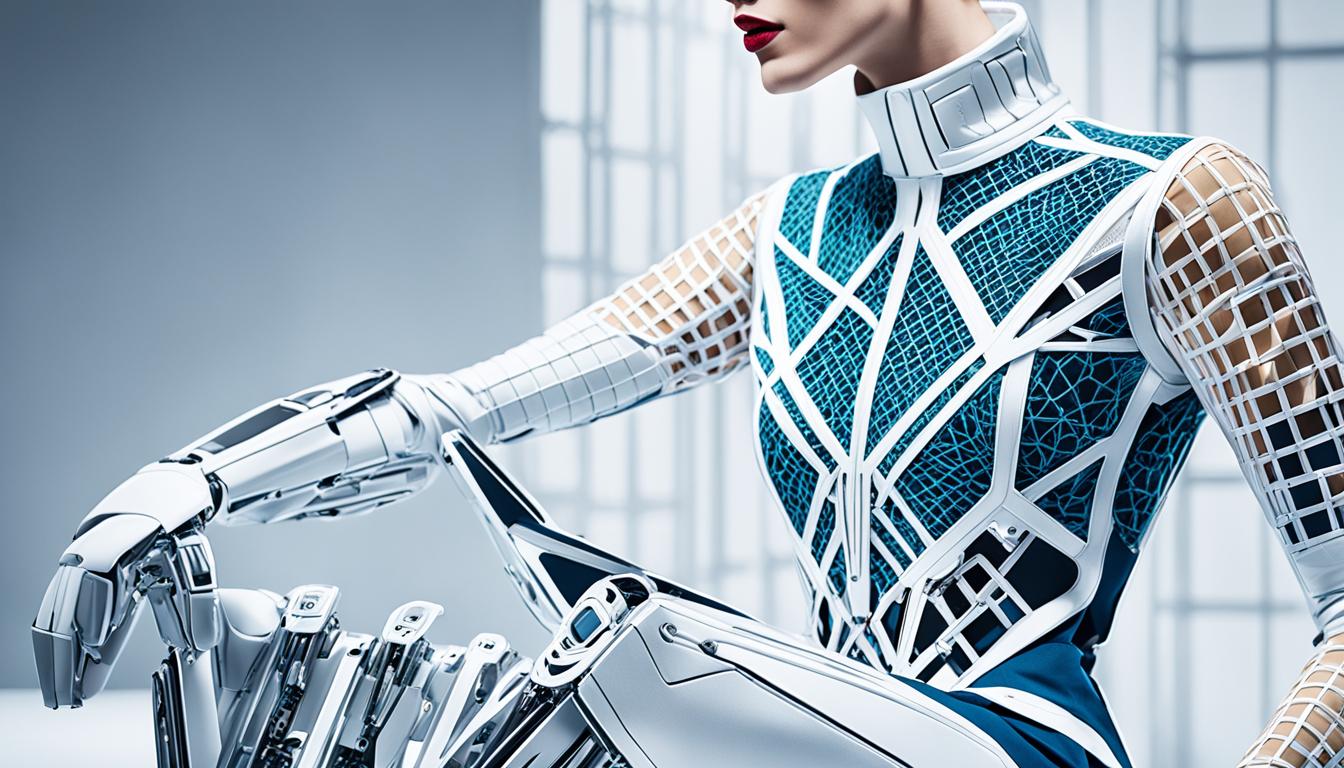
One of the key areas where robotics is driving personalization in fashion is in the creation of made-to-order garments. With robotics applications, designers can easily adapt patterns, sizes, and styles to meet individual customer preferences. By leveraging automation, fashion brands can offer unique, one-of-a-kind pieces tailored to each customer’s specific measurements and design choices.
Personalized shopping experiences are also being enhanced through robotics. Virtual assistants powered by artificial intelligence and machine learning algorithms can interact with customers, learn their preferences, and provide tailored recommendations. These personalized recommendations can help shoppers discover new styles, colors, and combinations that align with their individual tastes and preferences.
Efficiency in manufacturing processes is another area where robotics applications are shaping the personalization of fashion. With automated systems and robotic arms, fashion brands can increase production speed and precision while maintaining high quality. Robotics allows for efficient and accurate cutting, stitching, and assembling of garments, enabling brands to meet the demands of customized orders without sacrificing turnaround times.
Through tailored automation, robotics applications are transforming the fashion industry, offering customized garments, personalized shopping experiences, and efficient manufacturing processes. The integration of robotics technology is revolutionizing the way fashion is personalized, making it more accessible and tailored to individual preferences.
Conclusion
In conclusion, the integration of robotics and automation in the luxury fabric industry has brought about significant transformations and innovations. Through this article, we have explored the intersection of robotics and luxury fashion, highlighting the ways in which these technologies have enhanced artistry, efficiency, and personalization.
Robotics and automation have revolutionized fabric creation, streamlining manufacturing processes and ensuring precision in every stitch. We have witnessed the convergence of haute couture and high tech, with designers incorporating robotics into their collections at Paris Fashion Week. Iconic brands like Balenciaga have pushed the boundaries of innovation by leveraging robotics technology.
Furthermore, robotics have intersected with traditional craftsmanship, resulting in awe-inspiring creations that merge craft and technology. From Shanel Wu’s tapestry of craft and technology to the emergence of smart textiles and wearable garments, robotics engineering has brought new dimensions to luxury fabric artistry.
Looking forward, the role of robotics and automation in luxury fashion remains pivotal. The ongoing advancements in robotics technology and automation software continue to shape the future of the industry. With tailored automation and personalized fashion experiences becoming increasingly prevalent, robotics is poised to play a transformative role in the continued evolution of luxury fabrics.
FAQ
How is robotics incorporated into the luxury fabric industry?
What are some examples of robotics and automation in luxury fashion?
What is Balenciaga’s inflation innovation?
How has robotics technology revolutionized fabric creation?
Who is Shanel Wu and what is their contribution to the luxury fabric industry?
What are vest sensors and smart textiles?
How has Chloé reinvented sustainable luxury through robotics and automation?
How does automation software drive innovation in the luxury textile industry?
How do robotics companies shape the future of fashion fabrication?
What are the latest trends in the robotics industry that intersect with luxury fashion?
How does robotics technology personalize fashion?
Source Links
- https://theticker.org/13671/arts/weaving-the-future-tapestry-of-innovation-and-tradition-at-paris-fashion-week/
- https://www.gistyarn.com/blogs/podcast/episode-137-entangling-craft-and-tech-with-shanel-wu
- https://medium.com/@priyankapuri0018/the-textile-industry-stitched-together-with-growth-and-innovation-c062520df796

